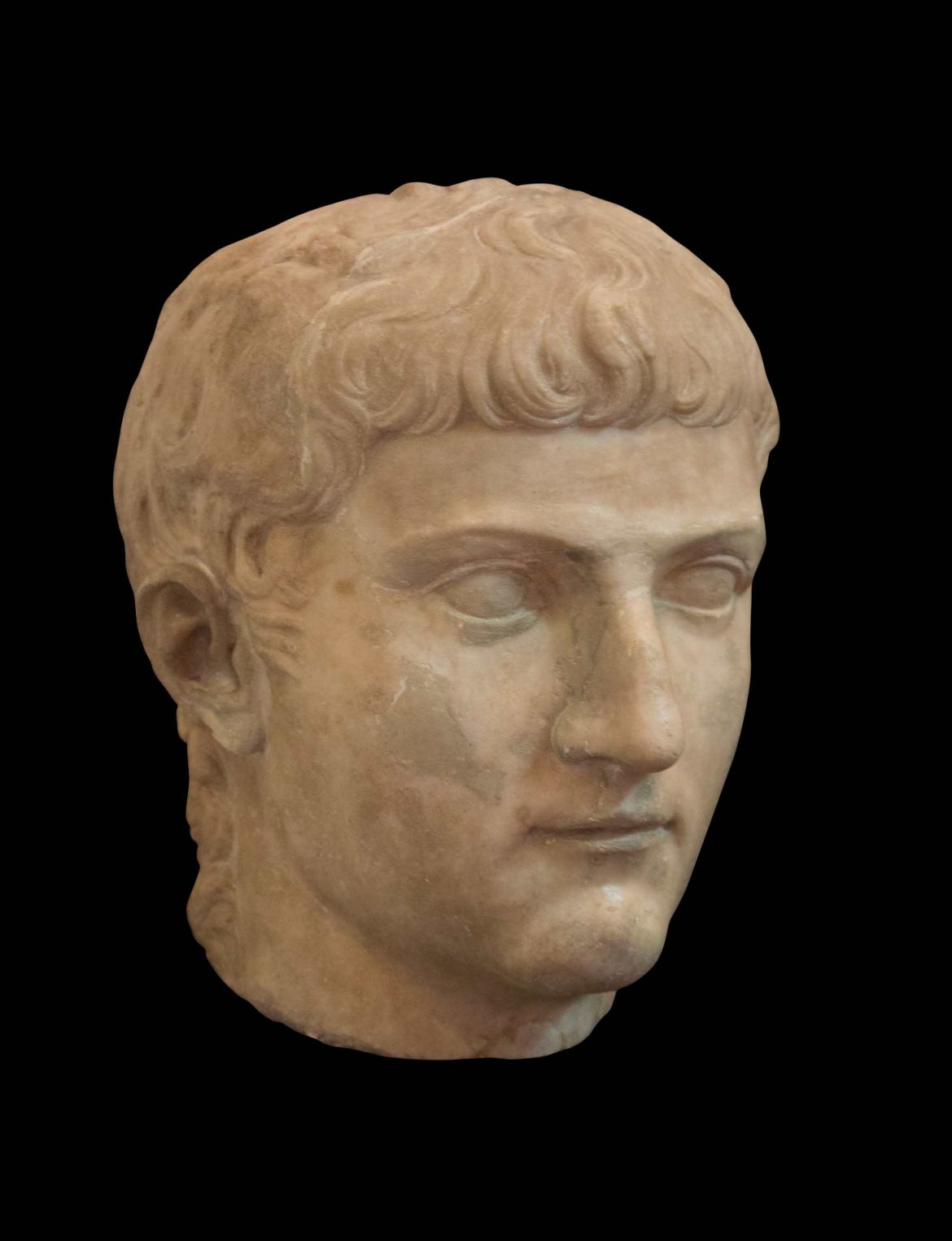Portrait of Gaius Iulius Caesar Germanicus
Parian marble
h.30 cm
17-19 AD
Portrait head of Gaius Iulius Caesar Germanicus, born in 15 BC and son of Drusus the Elder and Antonia the Younger. He was called “Germanicus” after the successes of his father who was military commander in Germania between 12 and 9 B.C. In 4 AD, on Augustus’ will Germanicus was adopted by Tiberius, and became thus designated heir to the imperial throne with the name of Gaius Iulius Caesar Germanicus. In the same year he married Agrippina the Elder, from whom he bore nine sons, amongst which one was to be the future emperor called Caligula (who reigned between 37 and 41 AD) and another was Agrippina the Younger, mother of the future emperor Nero (who reigned between 54 and 68 AD). In the years 10-16 AD, he first joined and then led the military expeditions in Germania with fairly little success, so much so that he renounced to secure the territories stretching to the Elbe River. Tiberius then appointed him commander in Asia to settle the Parthian question, but in 19 AD he was stricken with a severe illness and died in Antioch on the 10th of October. His premature death prevented him to ascend to the imperial throne. The portrait belonging to Fondazione shows the prince’s portrait while he was still young, which originally was facing right. The attitude appears determined, with a strong gaze and lips closed. The upper part of the head, together with the fringe, the right temple and part of the left one (except the eyebrow) were later restored, as well as the nose and the point of the chin. However, it can be identified as Germanicus: the almond-shaped eyes stretched by thin eyelid, the large forehead and the rounded chin and particularly the closed lips, short and thin, with lateral dimples. Other items comparable with our sculpture are preserved in the Ny Carlsberg Glyptotek of Copenhagen and at the Louvre in Paris, but the scholar Laura Buccino after deep research about Germanicus por- traits has included the one belonging to Fondazione Sorgente Group in the Gabii type (in Un nuovo ritratto di Germanico della Fondazione Sorgente Group, E. Bazzecchi – C. Parigi (a cura di), “Un’anima grande e posata”. Studi in memoria di Vincenzo Saladino offerti dai suoi allievi, Roma 2018). About the chronology of the model, Buccino supposes a date between 17 AD, celebration of Germanicus still a live, and the 19 AD, year of his death, to celebrate and legitimize his direct lineage from Augustus, as he was son of Antonia the Younger and married to Agrippina the Elder.


